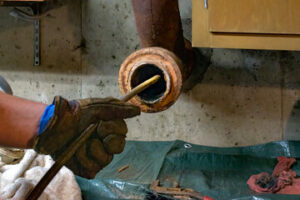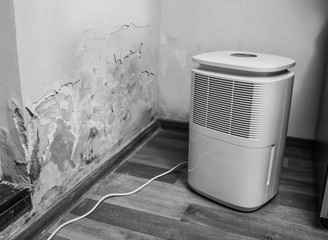Drain Cleaning Perth is a necessary maintenance procedure that keeps your home clean and free from nasty clogs. It prevents food, hair, grease, soap scum, bathroom and hygiene products, coffee grounds, dirt and more from building up within the pipes.

Keeping your drains clean can also help you avoid sewage overflow that causes environmental damage. Unlike DIY chemical drain cleaners, professional drain cleaning techniques thoroughly clean your pipes.
The classic baking soda and vinegar solution is a budget-friendly, eco-friendly, and safe alternative to chemical drain cleaners. It works by combining the natural abilities of both ingredients to break up and dissolve clogs. The reaction between the two substances also helps to eliminate foul odors and freshen a drain.
To use this drain cleaning method, first remove as much gunk from the drain and surrounding area as possible with a wire coat hanger or paper towels. Next, pour one cup of white vinegar down the drain. Wait five minutes for the fizzing action to take effect, then pour down another cup of boiling water to flush the drain and surrounding pipes. Repeat as needed to prevent clogs.
While the bubbling action of baking soda and vinegar can help to loosen some clogs, this method is not effective for breaking down or dissolving serious food particles or grime that have built up over time. Additionally, the acidity of vinegar can damage certain types of pipes over time, especially older ones made from copper or brass.
For this reason, it is important to use this DIY solution as a preventative measure rather than for major clogs. For these more severe clogs, it is recommended to try a plunger or a drain snake, both of which can physically dislodge blockages without damaging pipes.
Using homemade and natural drain cleaners is a good choice for routine maintenance and minor clogs, but when these methods are not effective it may be necessary to call a professional plumber. They have specialized tools and expertise to safely dislodge even the most stubborn clogs without damaging the pipes or creating dangerous fumes.
Enzyme Cleaners
Enzyme cleaners are a great alternative to chemical drain cleaners, as they are safe for plumbing and septic systems. These cleaners use bacteria to naturally feed on organic materials that cause drain clogs. Once the bacteria digest the material, it breaks down into smaller particles that can be washed away. Enzyme cleaners also eliminate odors by removing the source of the smell rather than just masking it.
These cleaners are typically sold in liquid form and can be poured down the drain or into a sink trap. They are usually accompanied by a pipe treatment product, which should be applied to the interior of the pipes to help prevent future blockages. It is important to follow the product directions carefully.
While enzymatic cleaners are effective, they aren’t the best solution for stubborn or long-term clogs. They are also slower than chemical cleaners, often taking hours to break down a blockage. Additionally, some enzyme cleaners may be hazardous to skin and respiratory health if they come into contact with the body, so it’s important to wear gloves and a face mask when handling them.
Bacterial drain cleaners are similar to enzymatic cleaners, but they contain a more concentrated amount of active bacteria. These cleaners can work faster and are more effective at breaking down organic material, but they are more dangerous to handle and require a lot of water to dilute them. Because of this, they are only recommended for use on small clogs that are difficult to reach with other methods. Also, they can be toxic to the environment if not properly disposed of after use.
Hydro-Jetting
For the most stubborn drain and sewer line clogs, hydro jetting is an effective option. It blasts water at high velocity, disintegrating and flushing away debris like sludge, grease, and tree roots. Hydro jetting eliminates the need for labor-intensive procedures such as snaking, and it is safer than chemical treatments for pipes.
Hydro jetting uses a durable hose that attaches to a pressurized water tank. The plumber inserts the nozzle downstream into the pipe, and then activates the water flow to clear out the clog. Different nozzles are available, some of which are designed to cut through specific materials like grease or tree roots. Other nozzles are general-purpose and designed to remove hard water deposits from pipes.
A trained technician aims the water jet at the obstruction from multiple angles, which thoroughly rinses the interior walls of the pipe. Once the clog is gone, the plumber slowly withdraws the nozzle while maintaining water pressure to prevent damage to the pipe. He or she then inspects the drain for any remaining debris and makes adjustments as needed.
Unlike drain cleaners and snakes, hydro jetting can be used on all types of pipes. This includes older cast iron, orangeburg, and clay pipes that can no longer handle modern plumbing systems without clogging. It also works well on residential sewer lines.
When it comes to preventing clogged pipes and sewer line backups, knowing the warning signs is important. Gurgling noises in sinks, tubs, and toilets are a sign of an underlying problem that can lead to expensive repairs. Hydro jetting can help you avoid these problems by clearing out debris before it builds up in your pipes.
Mechanical Drain Snakes
If a plunger fails to dislodge a drain clog, or it’s several inches or feet down a pipe, you may need to break out the mechanical drain snake. These long, flexible metal cables are inserted into pipes and twisted downward to hook or dislodge blockages and pull them out. If you’re planning on using a drain snake, opt for one with a head that is specifically designed to catch and pull out hair, which tends to compact into hard, sticky blockages over time. Choose a model with a 50-foot cable if you’re tackling a large house drain.
A plumbing snake isn’t the tamest tool in the shed, but it can be used safely and effectively with proper care and technique. Use caution to avoid common snaking mistakes, such as overly forceful cranking and poor control, which can damage pipes or cause injury. Brace the drum against your body and wedge yourself against cabinets or walls if necessary for stability when cranking, and be sure to pay attention to how cable tension and resistance changes as you feed it down a drain. This sensory feedback allows you to feel for clogs and see them being dislodged.
A professional plumber will also have access to high-powered drain cleaning equipment like motorized augers, which can bore into and dissolve larger clogs. These specialized tools can reach further down your home’s plumbing systems than household drain snakes, and also help identify underlying issues contributing to recurring blockages. They can then recommend preventative maintenance services to keep your drains running smoothly long-term. Contact B&L Plumbing if you’re facing a serious, persistent drain clog that home remedies or chemical cleaners can’t fix.
Wire Coat Hanger
If your shower drain is clogged with hair, soap scum, or other gunk, you may be tempted to roll up your sleeves and do the work yourself rather than call in a plumber. While some DIY techniques can cause more harm than good, a simple wire clothes hanger can be used to dislodge stubborn clogs and save you money on costly chemical drain cleaners.
First, straighten out your wire coat hanger, removing any plastic coating from the hook end. You’ll want the end of your wire to be straight and sturdy, with enough length to reach into your pipe. This will help reduce the risk of scratching internal fixtures and puncturing your pipes themselves.
Once you’ve straightened out the wire hanger, insert it into your clogged shower or sink drain. Wiggle it back and forth, pulling up on the hook regularly to remove the gunk. You may need to repeat this several times to clear the clog completely. After removing the clog, pour hot water down the drain to flush away any remaining gunk and help prevent future blockages.
Clothes hangers aren’t recommended for use in every clogged drain, however, as they can scratch the inside surface of pipes and make them more susceptible to damage over time. Additionally, a cloth hanger’s rigid structure can compact and push the clog further into the pipe, making it more difficult to remove in the long run.
